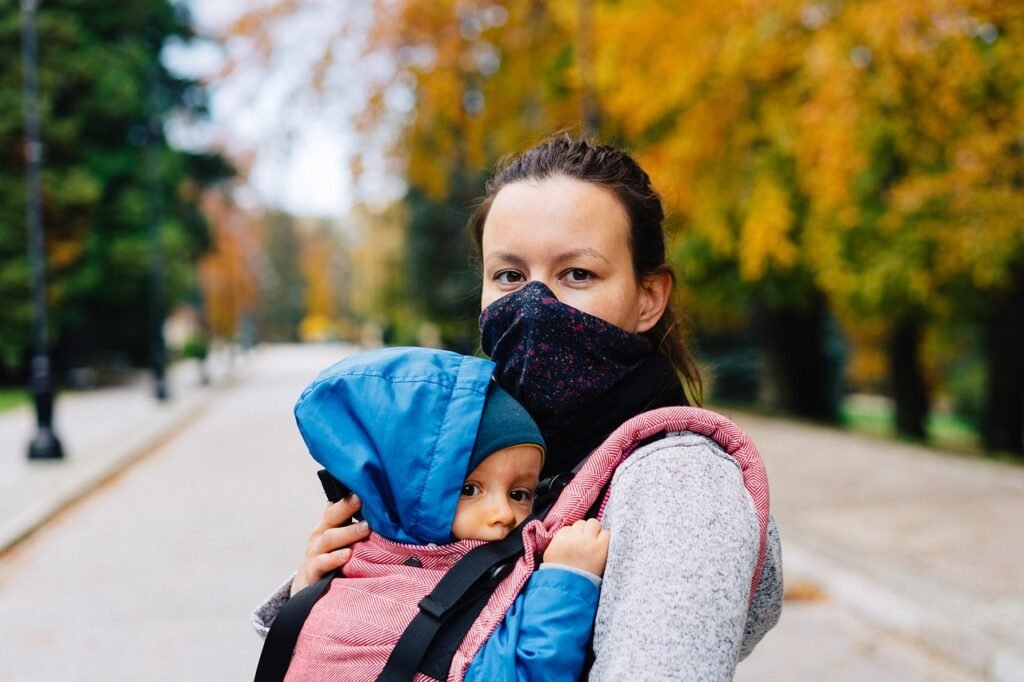Imagine curling up by a crackling fireplace, cozying up with a warm blanket, and savoring the comforting glow. Yes, the allure of a fireplace is undeniable, but it’s crucial to remember that safety always comes first. In this article, you will find ten invaluable fireplace safety tips that will not only keep you toasty but also ensure the safety of your loved ones. From simple precautions to essential maintenance, these tips are designed for everyone, regardless of age, to enjoy the warmth without worry. So, let’s dig in and discover the key to keeping warm and staying safe with your beloved fireplace.
Have a Professional Inspection
Schedule regular inspections
To ensure the safety and efficiency of your fireplace, it is important to schedule regular inspections by a certified chimney sweep. These professionals are trained to identify potential issues and can help prevent any hazards that may arise. By having your fireplace inspected on a regular basis, you can catch any problems early on and address them before they become major concerns.
Look for a certified chimney sweep
When choosing a chimney sweep for your inspection, be sure to look for one who is certified. Certification ensures that the sweep has undergone the necessary training and has the expertise to properly inspect and maintain your fireplace. It is always a good idea to ask for proof of certification before hiring a professional.
Inspect for cracks and blockages
During the inspection, the chimney sweep will carefully examine your fireplace and chimney for any cracks or blockages. Cracks can weaken the structure of the fireplace and lead to potential safety hazards. Blockages, such as nests or debris, can restrict the airflow and cause smoke to back up into your home. Identifying and addressing these issues is crucial for maintaining a safe and functional fireplace.
Check for proper ventilation
Proper ventilation is essential for the safe operation of a fireplace. During the inspection, the chimney sweep will ensure that the ventilation system is working effectively and that there are no obstructions or restrictions. Adequate ventilation helps to prevent the buildup of carbon monoxide and other harmful gases, ensuring the health and safety of everyone in your home.
Install a Carbon Monoxide Detector
Place detectors near sleeping areas
Carbon monoxide is a silent killer, as it is odorless and invisible. To protect yourself and your loved ones from this dangerous gas, it is important to install carbon monoxide detectors throughout your home, especially near sleeping areas. These detectors will alert you if there are elevated levels of carbon monoxide in your home, giving you valuable time to evacuate and seek help.
Test detectors regularly
Simply installing carbon monoxide detectors is not enough; you must also ensure that they are in proper working order. Test your detectors regularly to make sure they are functioning correctly. Most detectors have a test button that you can press to simulate a carbon monoxide alarm. If the alarm does not sound, replace the batteries or the entire detector if necessary.
Replace batteries as needed
Speaking of batteries, it is important to keep a close eye on their lifespan. Replace the batteries in your carbon monoxide detectors as needed and always have spare batteries on hand. Remember that these detectors are only effective if they have a reliable power source, so keep them in peak condition.
Install alarms on every level of the house
To ensure maximum safety, it is recommended to install carbon monoxide detectors on every level of your house, including the basement and any other living spaces. Carbon monoxide is a gas that can quickly spread throughout a building, so having alarms on multiple levels will provide the earliest possible warning of its presence.

This image is property of pixabay.com.
Use Protective Measures
Place a fireplace screen or glass enclosure
To prevent sparks and embers from escaping your fireplace and causing potential fires, it is essential to use a fireplace screen or glass enclosure. These protective measures serve as a barrier and keep your surroundings safe from errant flames. It is important to use a screen or enclosure that fits properly and is made of fire-resistant materials to ensure its effectiveness.
Keep flammable items away from the fireplace
It is crucial to keep flammable items, such as curtains, furniture, or decorations, a safe distance away from the fireplace. These materials can easily catch fire from stray sparks or direct contact with flames. By keeping a clear area around the fireplace, you greatly reduce the risk of accidental fires.
Use a fire-resistant hearth rug
Placing a fire-resistant hearth rug in front of your fireplace provides an additional layer of protection. These rugs are designed to withstand high temperatures and can help prevent sparks or hot embers from causing damage to your flooring. It is important to ensure that the rug is large enough to cover the necessary area and that it is made specifically for use in front of a fireplace.
Keep children and pets at a safe distance
Children and pets are naturally curious and may be attracted to the warmth and flickering flames of a fireplace. However, it is essential to keep them at a safe distance to prevent accidents or injuries. Consider using safety gates or barriers to create a designated area around the fireplace that is off-limits to young children and pets.
Ensure Proper Ventilation
Open damper before starting a fire
Before you ignite the first flames in your fireplace, always remember to open the damper. The damper controls the airflow and allows smoke and gases to escape through the chimney. Opening it ensures proper ventilation and prevents smoke from backing up into your home. It is important to close the damper once the fire has completely extinguished to avoid drafts and unnecessary heat loss.
Ensure vents are clear of debris
Blocked vents can hinder the proper ventilation of your fireplace and pose a significant fire hazard. Before each use, check that the vents are clear of any debris, such as leaves or animals’ nests. This simple step will allow for the free flow of air and prevent the buildup of harmful gases.
Close damper when the fireplace is not in use
When your fireplace is not in use, it is essential to close the damper completely. An open damper allows drafts to enter your home, making it less energy efficient and potentially increasing your heating costs. Additionally, a closed damper acts as a barrier against animals or debris entering your chimney and causing blockages.
Install a chimney cap
To further protect your fireplace and chimney from outside elements and unwanted visitors, consider installing a chimney cap. A chimney cap serves as a barrier against rain, snow, birds, and other animals attempting to gain access to your home through the chimney. It also helps to prevent debris from falling into the chimney and causing blockages.

This image is property of pixabay.com.
Practice Proper Wood Burning Techniques
Use seasoned hardwood
The type of wood you burn in your fireplace greatly affects the safety and efficiency of your fires. It is best to use seasoned hardwood, such as oak or maple, which has been dried for at least six months. Dry wood burns cleaner and produces less smoke and creosote buildup in the chimney. Avoid burning green or damp wood, as it can generate more smoke and increase the risk of a chimney fire.
Avoid burning wet or treated wood
Burning wet or treated wood can release harmful chemicals into the air and pose a health risk. Wet wood also produces more smoke and can cause excessive creosote buildup in the chimney. It is best to properly store and dry your firewood before using it in your fireplace to ensure clean and safe burning.
Don’t overload the fireplace
A common mistake when starting a fire is adding too much wood at once. Overloading the fireplace not only hinders proper airflow but also increases the risk of sparks and embers jumping out onto your floor or furniture. It is advisable to start with a small amount of wood and gradually add more as the fire burns, maintaining a manageable flame and heat output.
Don’t burn garbage or cardboard
Burning garbage or cardboard in your fireplace is not only inefficient, but it can also release harmful chemicals and smoke into your home. These materials can produce excessive heat, causing damage to your fireplace and chimney. Stick to burning only dry, seasoned wood for a safe and enjoyable fire.
Supervise the Fire
Never leave a fire unattended
It is essential to never leave a fire unattended, even for a short period. Accidents can happen unexpectedly, and a fire left unattended can quickly become dangerous. Always ensure that someone is present and responsible for monitoring the fire until it has completely extinguished.
Educate children about fire safety
Teaching children about fire safety is crucial for their well-being and the overall safety of your home. Explain the dangers of fire and establish clear rules, such as “no playing near the fireplace” or “always ask an adult for permission before starting a fire.” By instilling these practices at an early age, you help to create a safe environment for everyone.
Extinguish the fire before going to bed
Before retiring for the night, it is imperative to fully extinguish the fire in your fireplace. Use a fireplace tool to carefully spread out the embers and ashes, ensuring that they are no longer smoldering. Never go to bed with a fire still burning, as it can quickly escalate into a dangerous situation while you are asleep.
Use fireplace tools for handling flames and logs
When tending to the fire, always remember to use proper fireplace tools to handle flames and logs. These tools are designed to keep you at a safe distance from the heat and reduce the risk of burns or injuries. Avoid using your bare hands or any other makeshift tools that are not specifically designed for fireplace use.

This image is property of pixabay.com.
Maintain a Clear Area
Keep a safety zone around the fireplace
Maintaining a clear area around the fireplace is essential for preventing accidental fires. Keep furniture, rugs, and other flammable items at a safe distance from the fireplace. It is recommended to establish a safety zone of at least three feet around the fireplace to minimize the risk of sparks or hot ashes igniting anything nearby.
Remove flammable decorations nearby
If you enjoy decorating your mantle or hearth, be sure to use fire-resistant materials and avoid placing any flammable decorations in close proximity to the fireplace. This includes things like dried flowers, paper, or fabric. Opt for non-flammable decorations, such as metal or ceramic pieces, to ensure maximum safety.
Ensure curtains or furniture are not in close proximity
Take a look at the overall layout of your room and ensure that curtains, furniture, or other potentially flammable items are not positioned too close to the fireplace. Even if they are not directly in contact with the flames, they can still catch fire from stray sparks or excessive heat. Moving them further away minimizes this risk.
Don’t dry or hang clothes over the fireplace
While it may be tempting to hang wet clothes or gloves near the fireplace to dry them quickly, it is important to avoid doing so. Hanging clothing or any other items over the fireplace poses a significant fire hazard. Always use designated drying racks or other suitable areas for drying wet garments.
Proper Ash Disposal
Use an ash vacuum or metal container
When disposing of ashes from your fireplace, it is important to use the proper tools. An ash vacuum specifically designed for collecting fireplace ashes is a safe and efficient option. If you do not have access to an ash vacuum, use a metal container with a tight-fitting lid to store the ashes until they are cool enough for disposal.
Wait for ashes to cool before disposal
Never attempt to dispose of hot ashes from your fireplace. Wait at least 24 hours for the ashes to cool completely before handling or disposing of them. Even when the surface ashes appear cool, there may still be hidden embers that can cause a fire if not extinguished entirely.
Dispose of ashes in a non-combustible container
Always dispose of ashes in a non-combustible container, such as a metal or ceramic container. Never use combustible materials, like plastic bags or cardboard boxes, as they can ignite from the residual heat of the ashes. Once the ashes have cooled, tightly seal the container to prevent any sparks or embers from escaping.
Keep the container away from flammable materials
When storing the container with ashes, keep it away from any flammable materials, such as firewood or gasoline. It is important to create a safe distance between the container and any potential ignition sources. Store the container in a cool, dry area, preferably outside or in a well-ventilated garage.
Educate Yourself and Family
Read the fireplace instruction manual
Familiarize yourself with the instruction manual that accompanies your fireplace. Each fireplace model may have specific requirements or safety guidelines that you should be aware of. Understanding how your particular fireplace operates will enable you to use it safely and efficiently.
Educate everyone about emergency procedures
Make sure everyone in your household is well-informed about emergency procedures in the event of a fire. Clearly explain the escape routes, designated meeting points, and any other relevant safety measures. Practice fire drills periodically to ensure that everyone knows how to react quickly and calmly in an emergency.
Teach children about fire safety
Children are naturally curious about fire but may not fully understand the potential dangers. Take the time to teach children about fire safety, explaining the importance of not playing near the fireplace and what to do in case of a fire. Encourage them to ask questions and reinforce the message of fire safety on an ongoing basis.
Know how to operate the damper
Understanding how to operate the damper is crucial for proper fireplace maintenance and ventilation. Read the instructions or consult a professional to ensure that you are using the damper correctly. Being able to open and close the damper as needed will improve the efficiency and safety of your fireplace.
Have a Fire Safety Plan
Create and practice a family fire escape plan
Having a well-thought-out fire escape plan is essential for every household. Designate escape routes from each room and establish a meeting point outside the house where everyone can gather after evacuating. Ensure that everyone in the family understands the plan and practice it regularly to familiarize yourselves with the necessary actions.
Designate a meeting point outside
In the event of a fire, it is crucial to have a designated meeting point outside your home. This ensures that everyone can be accounted for and helps rescue personnel during emergency situations. Choose a spot that is a safe distance away from the house and easily recognizable for all family members.
Keep emergency numbers handy
Keep a list of emergency numbers readily available near your phone or in a visible location. Include the local fire department’s number, poison control, and any other relevant emergency contacts. In a crisis, time is critical, and having these numbers easily accessible can help you respond swiftly and efficiently.
Know how to use a fire extinguisher
Familiarize yourself with the location and proper use of fire extinguishers in your home. Ensure that each family member knows how to operate a fire extinguisher effectively. Remember the acronym “PASS” – Pull the pin, Aim at the base of the fire, Squeeze the handle, and Sweep from side to side. Regularly check the expiration date of your fire extinguishers and replace them when necessary.
By following these fireplace safety tips, you can keep yourself, your family, and your home safe and warm throughout the winter months. Remember to schedule regular inspections, use protective measures, ensure proper ventilation, practice proper wood-burning techniques, and educate yourself and your family about fire safety. By implementing these measures and having a fire safety plan in place, you can enjoy the cozy ambiance of a fireplace while minimizing the risk of accidents and hazards. Stay warm and stay safe!




